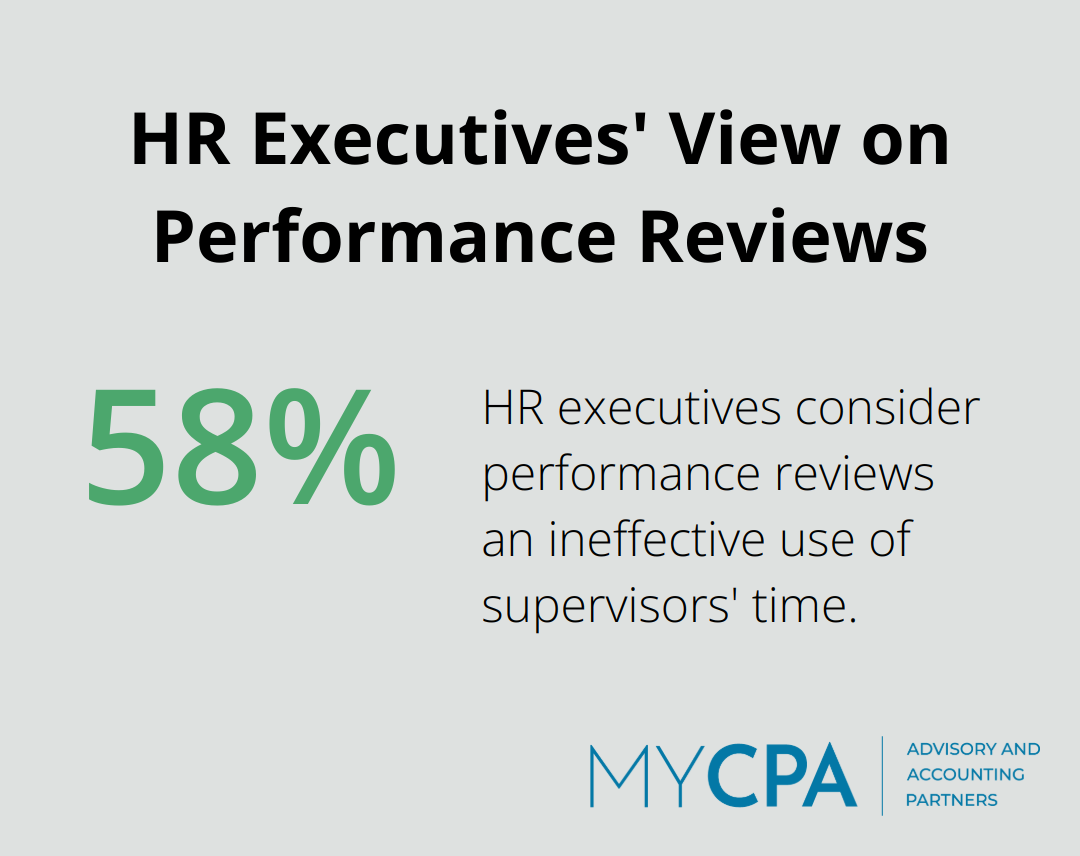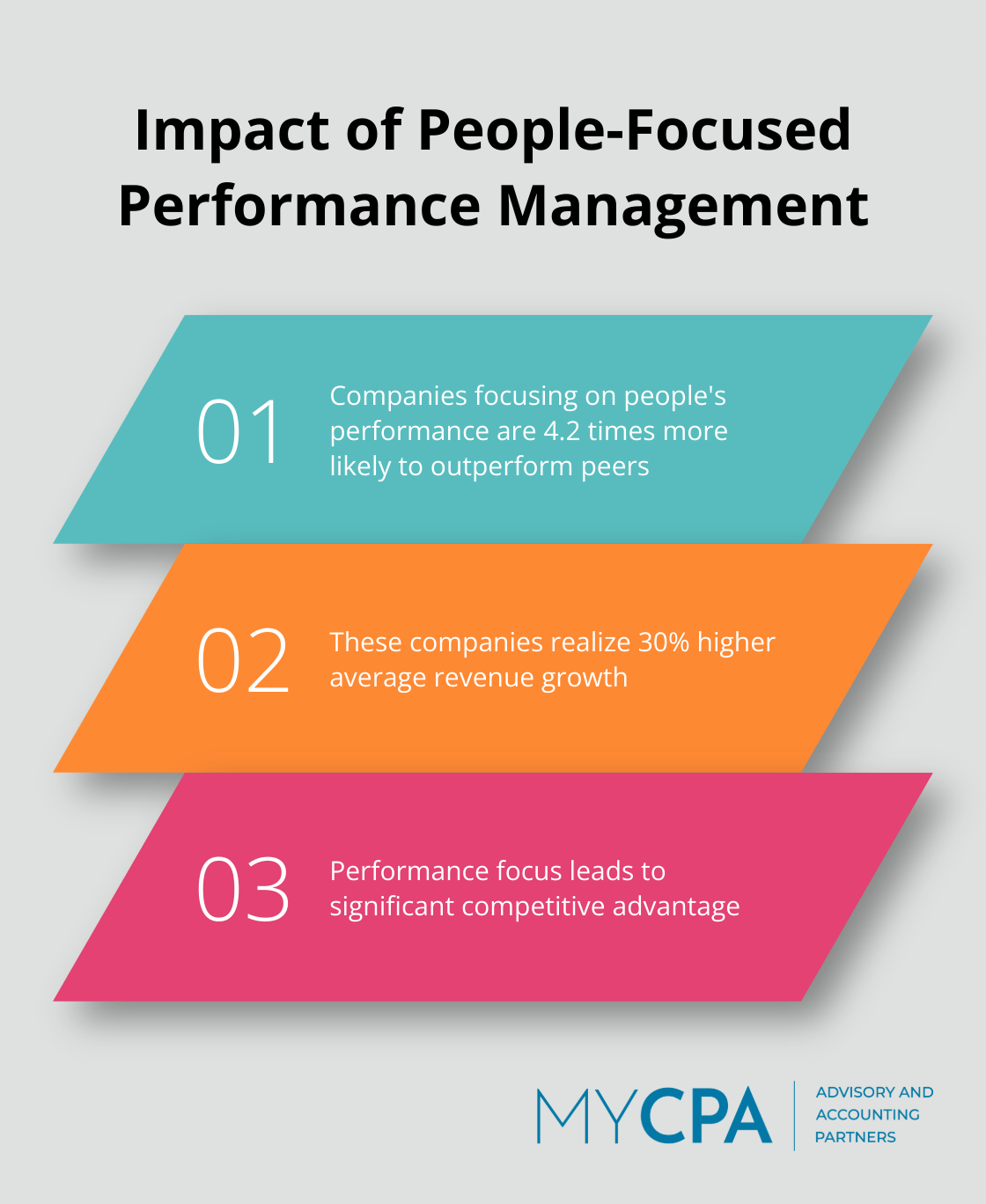
A well-crafted business strategy is the backbone of any successful company. At My CPA Advisory and Accounting Partners, we’ve seen firsthand how a solid plan can transform organizations and drive growth.
In this post, we’ll guide you through the essential steps of creating an effective business strategy and consulting approach. From defining goals to implementing strategic initiatives, you’ll learn how to position your company for long-term success in today’s competitive landscape.
The foundation of any successful strategy starts with clear business goals and a compelling vision. Deloitte reported that 58% of HR executives considered reviews an ineffective use of supervisors’ time. Your objectives should be specific, measurable, and time-bound. For example, set a goal like “achieve $10 million in annual revenue by 2028” instead of a vague “increase revenue” target.

Before you chart your course forward, you must understand where you stand. Conduct a thorough assessment of your current market position. Analyze your market share, customer base, and financial performance. Tools like Porter’s Five Forces can help you understand your competitive landscape. If you operate in a highly saturated market, your strategy might focus on differentiation rather than market expansion.
Your goals should reflect your company’s core values and mission. This alignment not only guides decision-making but also boosts employee engagement. Purpose-driven companies have 40% higher levels of workforce retention (Deloitte study). Take time to revisit your mission statement and ensure your strategic objectives support it.
Break down your long-term objectives into shorter-term, actionable milestones. This approach allows for regular progress checks and adjustments. If your goal is to expand into three new markets in five years, set annual targets for market research, pilot programs, and gradual expansion.
Goal-setting isn’t a one-time event. Regular review and adjustment of your objectives are essential. Try to implement quarterly strategy reviews to ensure your goals remain relevant and achievable in a changing business landscape. This practice (often overlooked by many companies) can make the difference between a stagnant business and one that consistently grows and adapts.
With your goals and vision clearly defined, the next step is to gain a deeper understanding of your market and competitive landscape. A comprehensive market analysis will provide the insights you need to refine your strategy and identify opportunities for growth.
A comprehensive market analysis forms the foundation of an effective business strategy. Focus on emerging technologies, changing consumer behaviors, and regulatory shifts that could disrupt your market.
In the accounting industry, for example, a significant trend towards cloud-based accounting solutions has emerged. This shift allows firms to offer more efficient and accessible services to clients. Staying ahead of such trends positions your business to capitalize on new opportunities.
Understanding your competitors is essential for developing a winning strategy. Conduct a thorough analysis of your top 3-5 competitors, focusing on their market share, pricing strategies, and unique selling propositions. Tools like SEMrush or Ahrefs provide valuable insights into competitors’ online presence and marketing strategies.
Don’t limit your analysis to direct competitors. Consider potential disruptors from adjacent industries that could enter your market. For instance, fintech startups have begun offering automated bookkeeping services, challenging traditional accounting firms (including My CPA Advisory and Accounting Partners).
Knowing your target customer in detail is critical for tailoring your products or services to meet their needs. Develop detailed buyer personas based on demographic data, psychographic information, and behavioral patterns. Use tools like Google Analytics or customer surveys to gather this information.
A study by the Content Marketing Institute found that 37% say content marketing helped grow a subscribed audience. This customer-centric approach can significantly improve your marketing effectiveness and overall business strategy.

A SWOT (Strengths, Weaknesses, Opportunities, Threats) analysis provides a structured way to evaluate your business’s position in the market. Be honest in this assessment. Identify your core competencies and areas where you fall short compared to competitors.
For opportunities, look for underserved market segments or emerging needs that align with your strengths. When considering threats, don’t just focus on competitors. Consider broader economic, technological, or regulatory factors that could impact your business.
A SWOT analysis is most effective when it leads to actionable insights. For each item identified, develop specific strategies to capitalize on strengths and opportunities while addressing weaknesses and mitigating threats.
Data-driven decision-making is a key component of successful market analysis. Use analytics tools to track customer behavior, sales trends, and market shifts. This approach allows you to make informed decisions based on real-time data rather than gut feelings or outdated information.
With a thorough market analysis complete, you’ll be well-equipped to develop and implement strategic initiatives that align with your business goals and market realities. The next step involves translating these insights into actionable plans that drive your business forward.
Companies that focus on their people’s performance are 4.2 times more likely to outperform their peers, realizing an average 30 percent higher revenue growth. Rank your initiatives based on potential impact and feasibility. Focus on high-impact, low-effort initiatives first to build momentum and demonstrate early wins.

Resource allocation plays a vital role in strategy execution. A Harvard Business Review survey found that 61% of executives struggle to bridge the gap between strategy formulation and day-to-day implementation. Define resource requirements for each initiative and align them with your overall budget. Consider zero-based budgeting to allocate resources based on strategic importance rather than historical spending patterns.
Develop specific, measurable Key Performance Indicators (KPIs) for each strategic initiative. Organizations using KPIs are more likely to achieve their strategic objectives. For example, if you aim to improve customer satisfaction, track metrics like Net Promoter Score (NPS) or customer retention rates. Review these metrics at least monthly to gauge progress and make necessary adjustments.
Create a culture of accountability by assigning clear ownership for each strategic initiative. Organizations with high accountability achieve their project goals 2.5 times more often than those with low accountability (Project Management Institute). Implement a regular review process where initiative owners report on progress, challenges, and next steps. This transparency helps identify bottlenecks early and allows for timely course corrections.
Strategy execution requires flexibility and adaptation based on real-world results and changing market conditions. Regularly reassess your initiatives and adjust your approach as needed. This agility ensures your strategy remains relevant and effective in a dynamic business environment.
Creating an effective business strategy requires dedication, insight, and adaptability. A well-crafted strategy serves as a roadmap for your organization, guiding decision-making and resource allocation. It aligns your team around common objectives and positions your company to capitalize on opportunities while mitigating risks.
The business environment constantly evolves, necessitating regular review and adaptation of your strategy. Set aside time each quarter to assess your progress, analyze new market trends, and adjust your approach as needed. This proactive stance will help you stay ahead of the curve and respond swiftly to changes in your industry.
At My CPA Advisory and Accounting Partners, we offer comprehensive business strategy and consulting services to help you navigate these complexities. Our team of experts provides the insights and support you need to turn your strategic vision into reality (from financial planning to tax optimization). Take a proactive approach to strategy development and unlock your company’s full potential.








Privacy Policy | Terms & Conditions | Powered by Cajabra